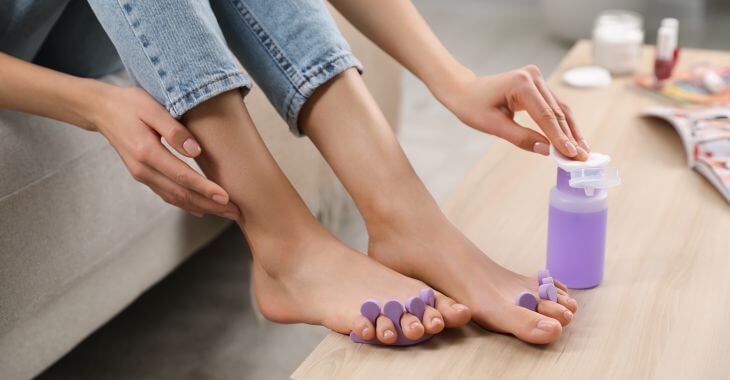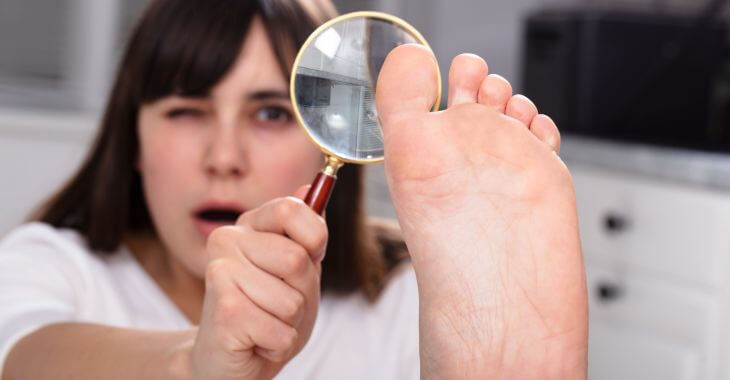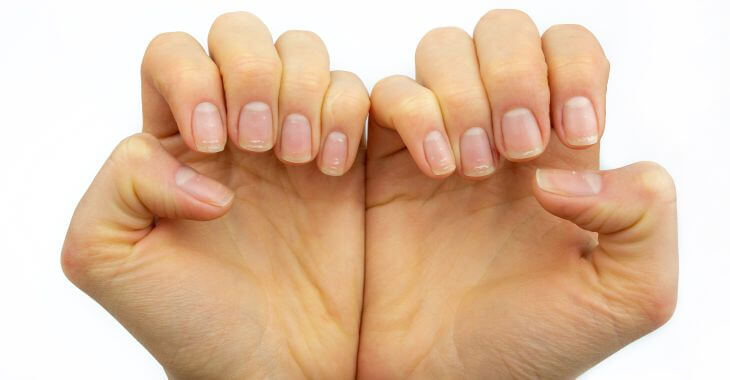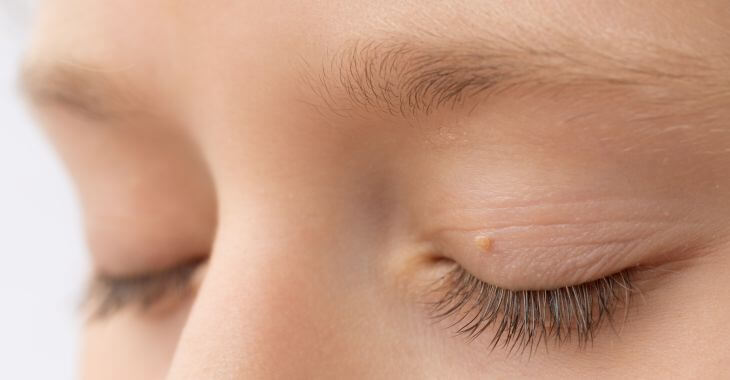White Spots on Toenails After Removing Polish?

When you have nail polish on your finger or toenails, you may not see changes in your nails that can indicate changes in your health. If you have white spots on toenails after removing polish, what does this mean? There are a few different reasons you may have white spots on nails.
Causes of White Marks on Toenails
In most cases, white spots on toenails after removing polish is not a major health concern. If you have white spots on toenails, they may appear as marks, lines or dots of white on one or more toenails or fingernails. This can indicate a variety of possible causes.
- Leukonychia
- The most common cause of white spots on nails is leukonychia. This indicates an injury to the nail matrix or bed, resulting in white marks on toenails and fingernails. The nail may have been hit or pinched, or an allergic reaction can cause leukonychia, leaving white spots on the toenails.
- Mineral Deficiency
- If you do not get enough of certain minerals, it may be the reason for white spots on nails, both the fingers and toes. Zinc, calcium, iron and other mineral deficiencies may present with white marks on toenails or white spots on fingernails – lab testing can confirm a mineral deficiency.
- Fungal Infection
- Toenails are susceptible to fungal infections that can result in white spots on toenails after removing polish. Many toenail fungal infections are obtained when receiving a pedicure at nail salons with poor sanitary practices, which may be why there are white spots on toenails.
- Onychomycosis is one of the most common types of fungi infections that affect the toenails. One of the first signs of this fungi is white spots on toenails. This infection can spread to the nail bed and other toenails, requiring treatment to stop the fungi growth.
- Medications and Toxins
- If you have white spots on your nails, it may be due to a medication you are taking or exposure to certain toxins or poisons. Harsh medications within chemotherapy or certain other drugs can result in white spots appearing on finger or toenails.
- White marks on toenails can also be a sign of exposure to poisonous substances like arsenic, lead or other heavy metals. It is important that you seek medical diagnosis and treatment if you have white spots on nails combined with other symptoms of heavy metal poisoning.
- Hereditary
- There are people who are born with white spots covering their nails, but genetics usually would not cause spontaneous white spots. True leukonychia can result in infants having white nails at birth or shortly after they are born, but it will not appear later in life.
- Health Conditions
- While it is more likely that an injury or fungal infection is causing white spots on the nails, it is possible that these marks are caused by a systemic disease. Kidney and heart failure can impact the nails, as well as diabetes, liver cirrhosis and skin conditions like nail psoriasis.
There are many reasons for white spots on nails, but most commonly it is from a previous injury to the nail weeks before. It is when multiple nails are affected or there are other symptoms that it should be diagnosed by a doctor to determine if treatment is needed for an underlying condition.
What Do White, Chalky Toenails Mean?
Another nail symptoms beyond white spots on toenails is white chalky toenails. If you have a white substances that is covering your toenails after removing polish, you may have keratin granulations. This condition may be related to wearing nail polish on a consistent basis.
Keratin granulations are related to wearing nail polish for lengthy periods, resulting in dehydration of the nail plate. Keratins are molecules on the nail plate that need moisture to stay healthy. A thick layer of nail polish can cause keratin granulations to appear on the nails.
If there are white spots on toenails after removing polish, it may be keratin granulations. The condition leaves white chalky marks or stains on the toenails due to dehydration of the nail plate. This is not a serious condition – removing the polish and moisturizing the nails can get rid of the spots.
While keratin granulations do not pose a risk to the toenails, it is important to note that superficial white onychomycosis can also cause white, chalky toenails. This is a fungal infection that does require treatment to stop the spread and reduce the risk of toenail damage.

Diagnosing White Spots on Nails
If you suspect your white spots on toe or fingernails are more than an injury, allergic reaction or keratin granulation, you should visit your doctor or dermatologist. While rare, it is possible that white marks on toenails or white spots on fingernails can be a symptom of another health problem.
The information provided on this website, including text, graphics, images, and other materials, is intended solely for informational purposes and should not be used as a substitute for professional medical advice, diagnosis, or treatment.




)